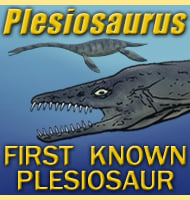Arminisaurus
In Depth Arminisaurus is a genus of pliosaurid plesiosaur that lived in Waters submerging what is now Germany during the early Jurassic. Arminisaurus is named after Arminius, a Germanic tribal chieftain who commanded the Germanic tribal alliance forces at the Battle of the Teutoburg Forest in which The Roman Empire suffered a major defeat. Further … Read more
